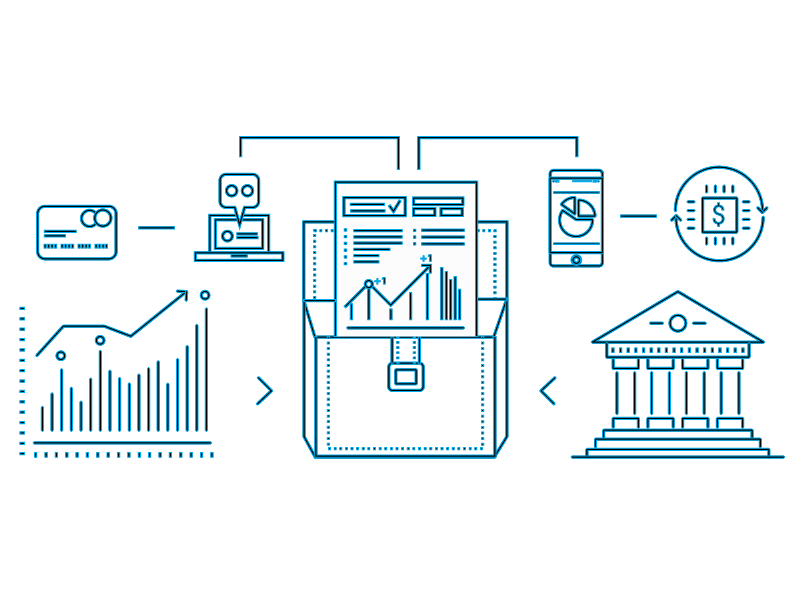What is Forex Trading?
What Is Forex Trading
All About?
The forex market averages 5.1 trillion in trading volume per day
The largest and most liquid financial market in the world is the foreign exchange market, which is commonly known as “forex” or “FX”. This marketplace allows buying and selling of various national currencies globally. Every day trillions of dollars are traded over the counter (OTC) through the interbank market rather than on a centralized exchange. Instead of a centralized location, the forex market consists of an electronic network of banks, institutions, brokers and individual traders.
You likely have already taken part in the forex market in one way or another, such as purchasing imported electronics or buying foreign currency when traveling abroad. So why do the majority of traders gravitate to forex? Some reasons why are:
- The forex market is massive.
- Various levels of volatility for trading opportunities.
- Many varieties of currencies available to trade.
- Low trading costs.
- 24-hour market (trading does not close overnight), five and a half days a week.
The Forex (FX) Market in Brief
In brief, the forex market operates much like other markets in that the pricing mechanism is based on supply and demand. The market consists of an electronic network of institutions, each of the participants banks providing bids and offers for a specific currency.

Consider a simple example, let’s suppose a large demand for the Japanese Yen surges from US tourists holding US Dollars and consequently they exchange their US Dollars into Japanese Yen. The value of the Japanese Yen will go up while the US dollar will drop in value. Thus, the US Dollar weakens against the Japanese Yen and the USD/JPY currency pair moves lower.
What Factors Impact the Volatility of the Forex Market?
While the information above is one example of what can influence the movement of the forex market, many more factors can propel the market. Macroeconomic events that occur within a country, such as electing a new president, GDP, inflation, employment levels as well as speculation around the overall market’s sentiment, can create market volatility. Since a country’s currency is only as valuable as the economic health of that country, assessing the economic outlook for a country through published economy-sector releases can help provide insight into how that country’s economy is performing. Following an economic calendar can help traders anticipate crucial economic releases and keep up to date in the competitive world of forex trading.
Following an economic calendar can help traders anticipate crucial economic releases
Why is Forex Trading so Appealing?
The forex market is a global marketplace where traders from all around the world come together to trade different countries’ currencies to make profit or hedge monetary risk. The market size is extremely massive with trillions in trading volume transacted every day. According to the Bank for International Settlements, trading in the forex market averages a whopping 5.1 trillion per day! Consequently, even larger currency holding participants (aside from central banks) have only a small effect on a currency’s price movements. This is one of the main attractions to currency trading. No trader desires to trade instruments where the valuations can be manipulated by other traders or market participants. Ultimately, traders seek to trade in markets that are balanced and fair. No participant wants to be concerned about big market players motives and instead aim to focus their efforts on known factors that impact pricing and valuations.
Another appeal is full access, as the forex market is open 24 hours a day (with the exception of weekends or holidays when no global financial center is open). This means traders have more flexibility to trade any time of the day.
How Does Forex Trading Work?
So how exactly do traders make money in forex trading? It is actually not as complicated as some may think. Let’s say you believe the value of a particular currency will rise in value or appreciate, then you will buy the currency. Buying can also be termed as going “long”. However, if you believe the value of the currency is going to drop or depreciate, you sell the currency or go “short”. For example, if you were looking to trade EUR/USD, the euro is the base currency, which is the basis for buy/sell. If you made a prediction that the US economy will decline, which is not good for the US dollar, then you would buy EUR/USD or go long. Essentially what you have done is bought the euro with the assumption that euros will go up versus the US dollar.
Who Trades the Forex Market?
Traders in the forex market can be classified as two different types, speculators and hedgers. Speculators take a higher risk approach and try to make a profit from betting on the direction they believe an asset will follow. Hedgers, however, primarily look to reduce risk or volatility by taking an offsetting position in a security to balance out profits and losses of the underlying asset.
How Do You Read a Forex Quote?
It’s important for all traders to understand what the forex quote means since this is the price you will either enter or exit the position. The first currency represents the “base” currency while the second currency pair is called the “quote” currency. The quote currency can also be referred to as the “pip” currency and unrealized profit/loss is determined in this currency.
The forex quote essentially shows how much the base currency is valued at versus the second currency. If we look at the currency pair EUR/USD in more detail, the euro is the base currency and the US dollar is the quote currency. Therefore, if the EUR/USD rate equals 1.85405, then one euro is worth 1.85405 US dollars.
What Is a Pip?
Pip or Price Interest Point is the unit of measurement used in forex markets which represents the price movement between two currencies.
A pip can be a different decimal depending on the currency pair you are trading, however, it is usually equal to the fourth figure after the decimal point with major currency pairs. A 0.00010 movement in the price of the EUD/USD pair is considered a one pip move. This applies to all five decimal currency pairs.
If we observe the EUR/USD rate increasing from 1.32485 to 1.32495, the price movement is equal to 1 pip. On the other hand, if the euro depreciates against the US Dollar by 200 pips, the new price will reflect a lower price of 1.30495 as it will cost less in US Dollars to buy 1 euro.
On currency pairs that have three decimal values, a pip will be the second decimal value of the quote, for example, AUD/JPY 72.985.
On a two decimal value pair, a pip will be the first decimal value.
When a currency pair is quoted in:
5 decimal places, a pip is thought of in 0.00010 amounts
3 decimal places, a pip is thought of in 0.010 amounts
2 decimal places, a pip is thought of in 0.10 amounts
This educational course will provide further detail on pip value and much more in later articles.
Why Do Traders Choose Forex?
Traders of all different experience levels benefit from trading the forex market compared to other markets and here’s why:
Cheaper trading costs. Who doesn’t like lower trading costs to get in the market? Usually forex brokers make money off the spread if the trade is open/closed before overnight funding fees are settled. When compared to other markets like equities, which have commission charges, forex trading can alternatively offer lower transaction costs.
Lower spreads, more liquidity. Forex market bid/ask spreads are very low, especially with major FX pairs since these currencies are backed by more liquidity. When entering a trade, the spread is the initial trading cost applied and the market must first move in your favor to cover the transaction cost. Any extra pips that move further in your favor are considered net profit.
More chances to make money. Speculators in the forex market can choose from a large selection of various currency pairs globally and enter the market.
Trading with leverage. The forex market allows traders to make use of leverage. Instead of paying the full cost of a trade, leverage means the trader only needs to put down a fraction of the cost instead. While this has the potential to allow traders to make larger gains, it also means they can suffer larger losses as well.
Forex Term Key Takeaways
Base Currency
In the forex market, prices are quoted in currency pairs. The base currency represents the first currency in a currency pair quotation. For example, GBP/USD, the British pound is considered the base currency.
Quote Currency
The quote currency is the second currency in a currency pair quotation. Using the above GBP/USD example, the US Dollar is considered the quote currency.
Bid
The bid price, which is the opposite of an ask, is the highest price that a buyer is willing to pay. This is the price you will see if you want to sell or short a currency pair, often this will be displayed on the left side of the quote.
Ask
The ask price, opposite of a bid, is the lowest price a seller is willing to take. This is the price shown if you want to buy or go long a currency pair, usually this is shown on the right side of the quote.
Spread
Forex brokers offer two different prices for forex currency pairs, the bid and ask price. The difference between the bid and ask price is known as the spread.
Liquidity
When there are numerous market participants trading a currency pair and it can easily be transacted in the market, the asset is known to be liquid.
Pip
A pip (price interest point) is the unit of measurement used in forex markets to represent the price movement between two currency pairs. For example, with a five decimal currency pair, it is referred to as a one digit move in the fourth decimal place.
Leverage
Leverage permits traders to open trades while only putting up a fraction of the full value of the trade. While this gives traders access to control bigger positions with a smaller amount of money, leverage is seen as a double edged sword since it can increase profits and losses.
Margin
When trading with leverage, this is the amount of capital needed to open the trading position. Essentially this is a portion of your money that the broker puts aside to keep your trade open to assure that you can absorb the potential loss of the trade.
Margin Call
In forex, this occurs when the margin level has dipped below a specific threshold level set by your broker. A margin call happens when your floating losses exceed your used margin.

